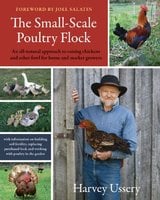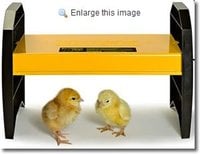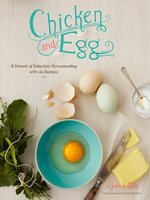This is easily my favorite book on raising fowl. It is absolutely the most comprehensive book I own covering everything from: why to raise chickens, obtaining chicks, manure, processing birds (with photos!), mixing feed, performance spreadsheets, etc.
I appreciate that there are only brief descriptions of breeds the author has experience with. I have other books that attempt to give an overview of many breeds--of course they always leave out so many breeds I wonder why they bother.
If you want to raise birds sustainably, this is your book. The author argues that you should only order straight run chicks; and you should process your extra cockerels, cocks and hens. I have several books that have just a paragraph or two about processing, with maybe a photo or two. This book has a nice photo spread detailing processing, including accepted humane kill methods. Is this book all you need to be confident in your first processing experience? No. However, this book is the clear winner in describing processing compared to all the other general chicken rearing books on my shelf.
The main negative I have about the book is regarding frequent mentioning of issues such as peak-oil. I'm fairly conservative and went to school for resource management--while I don't disagree with much of what he says, I think it will turn a few people off to the many important things he is saying. Considering my degree in natural science I very much appreciate that he does seem to cite his sources (I will admit I haven't looked at what his sources are).
I appreciate that there are only brief descriptions of breeds the author has experience with. I have other books that attempt to give an overview of many breeds--of course they always leave out so many breeds I wonder why they bother.
If you want to raise birds sustainably, this is your book. The author argues that you should only order straight run chicks; and you should process your extra cockerels, cocks and hens. I have several books that have just a paragraph or two about processing, with maybe a photo or two. This book has a nice photo spread detailing processing, including accepted humane kill methods. Is this book all you need to be confident in your first processing experience? No. However, this book is the clear winner in describing processing compared to all the other general chicken rearing books on my shelf.
The main negative I have about the book is regarding frequent mentioning of issues such as peak-oil. I'm fairly conservative and went to school for resource management--while I don't disagree with much of what he says, I think it will turn a few people off to the many important things he is saying. Considering my degree in natural science I very much appreciate that he does seem to cite his sources (I will admit I haven't looked at what his sources are).





